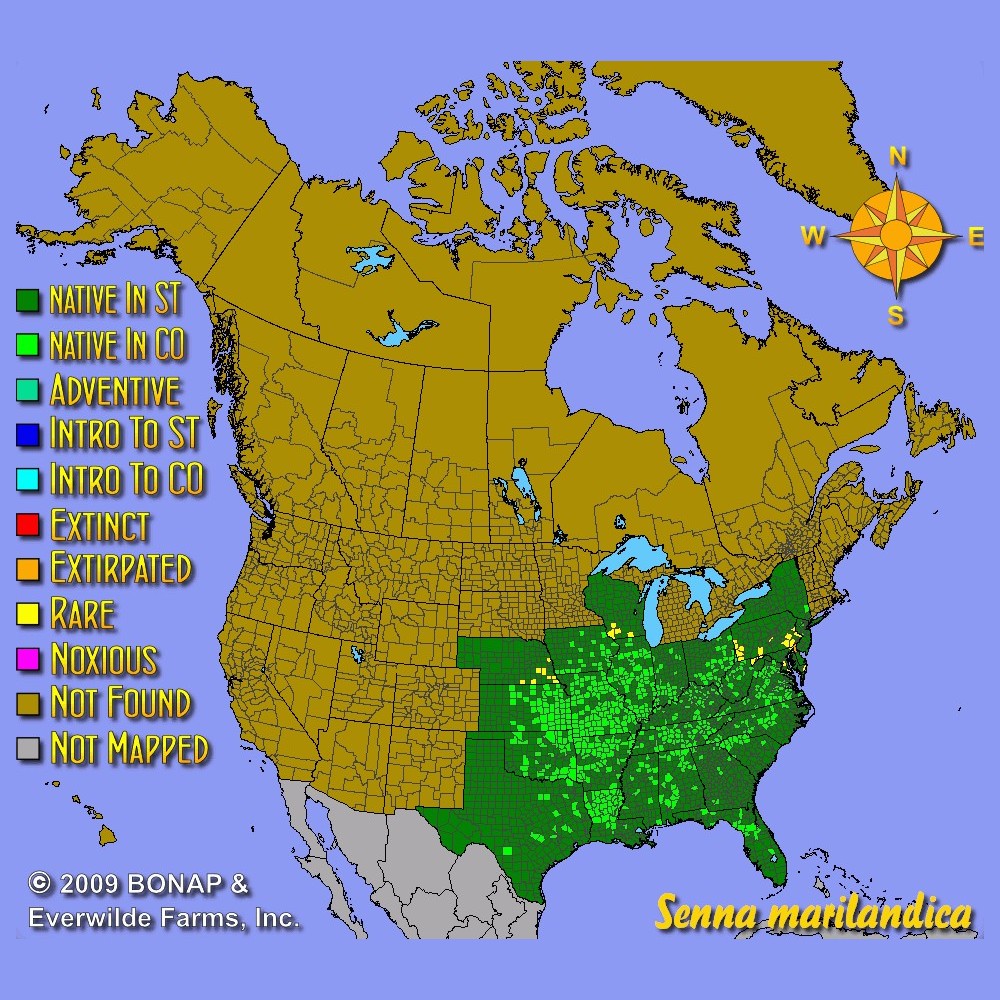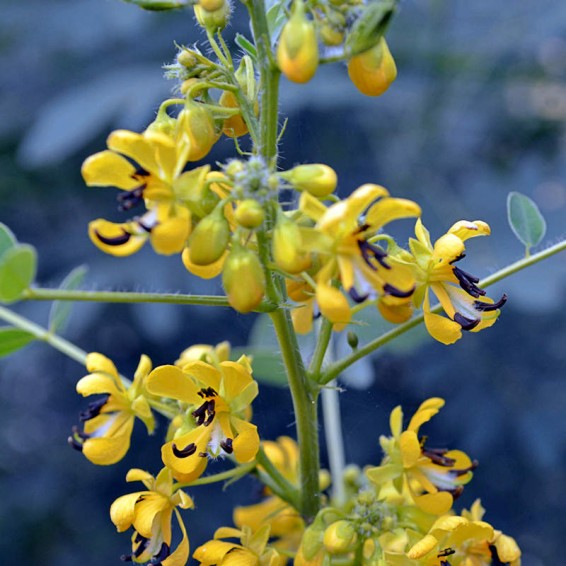Maryland Senna Seeds
Senna marilandica
- HOW TO GROW
- FAST FACTS
HOW TO GROW
Sowing: To soften the hard coating on these seeds, rub them lightly with sandpaper or soak them in 180 degrees F water overnight. Mix the seeds with moist sand and store in the refrigerator for 10-15 days before planting. Sow the seed in early spring, planting just below the surface of the soil. Keep the soil lightly moist until germination.
Growing: Water seedlings regularly until they become established. This plant adapts well to either dry or moist soil and needs little care, though watering during especially dry weather will improve its blooming. Cut back the growing stems to encourage bushier growth. This plant attracts bees.
Harvesting: For long-lasting cut flowers, choose stems with flowers that have just opened. Strip the foliage that will fall below the water level, and place in water immediately.
Seed Saving: As the seed pods develop, watch them carefully; they eventually explode and expel their seeds. Collect the pods as soon as they begin to dry. Spread them out away from direct sunlight, covering them lightly to contain the seed as the pods explode. Separate the seed from the pods, and store the seed in a cool dry place.
FAST FACTS
Common Names: Wild Senna, Southern Wild Senna
Latin Name: Senna marilandica
Species Origin: US Native Wildflower
Type: Native Wildflowers
Life Cycle: Perennial
USDA Zones: 5, 6, 7, 8, 9
US Regions: Plains/Texas, Midwest, Northeast, Southeast
Seeds per Ounce: 1,700
Stratification: Cold/Wet for 1 Week
Germination Ease: Stratify 1 Week
Sunlight: Full Sun, Part Sun
Height: 48 Inches
Color: Yellow
Bloom Season: Blooms Late Summer
DESCRIPTION

HOW TO GROW
Sowing: To soften the hard coating on these seeds, rub them lightly with sandpaper or soak them in 180 degrees F water overnight. Mix the seeds with moist sand and store in the refrigerator for 10-15 days before planting. Sow the seed in early spring, planting just below the surface of the soil. Keep the soil lightly moist until germination.
Growing: Water seedlings regularly until they become established. This plant adapts well to either dry or moist soil and needs little care, though watering during especially dry weather will improve its blooming. Cut back the growing stems to encourage bushier growth. This plant attracts bees.
Harvesting: For long-lasting cut flowers, choose stems with flowers that have just opened. Strip the foliage that will fall below the water level, and place in water immediately.
Seed Saving: As the seed pods develop, watch them carefully; they eventually explode and expel their seeds. Collect the pods as soon as they begin to dry. Spread them out away from direct sunlight, covering them lightly to contain the seed as the pods explode. Separate the seed from the pods, and store the seed in a cool dry place.
FAST FACTS
Common Names: Wild Senna, Southern Wild Senna
Latin Name: Senna marilandica
Species Origin: US Native Wildflower
Type: Native Wildflowers
Life Cycle: Perennial
USDA Zones: 5, 6, 7, 8, 9
US Regions: Plains/Texas, Midwest, Northeast, Southeast
Seeds per Ounce: 1,700
Stratification: Cold/Wet for 1 Week
Germination Ease: Stratify 1 Week
Sunlight: Full Sun, Part Sun
Height: 48 Inches
Color: Yellow
Bloom Season: Blooms Late Summer




